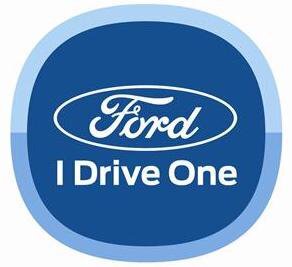-
Posts
951 -
Joined
-
Last visited
-
Days Won
34
About TheWizard

Recent Profile Visitors
1,230 profile views
TheWizard's Achievements
Newbie (1/14)
6
Community Answers
-
You must be fairly tolerant. I haven't experienced it in an Edge but in my Jeep GC it is quite intrusive. I had a Cadillac XT5 for a couple of weeks rental and although it was much smother, there was still an annoying delay when pulling away from a stop light. The best one I've experienced was in a Mercedes GLE - it was quiet and unobtrusive yet it still had that annoying delay. In fact, it was so quiet that it took several times to answer the question "why doesn't this thing just go when I step on the gas?" The gas savings are zero except in traffic and even then they amount to maybe half a mile per gallon (perhaps one mpg if I was being really generous). That .5 mpg is nothing to the consumer but it adds up over an entire line of vehicles. I don't mind that it's there as long as I can turn it off but I certainly would prefer that I could turn it off just once instead of every time I start the car. That's why I bought the software to do it in the Jeep.
-
Unfortunately, that's the way all of the manufacturers configure their Automatic Start Stop ("ASS" ) systems. The reason is that the government won't allow them to include it in their CAFE results unless it is on by default. Some have programming workarounds like FORScan for Ford or DiagFCA for Fiat Chrysler but others just leave you stuck with it.
-
I found that it was quite difficult to achieve the rated mileage because the endless torque of the EcoBoost makes it hard not to keep putting your foot in it. We frequently had mileage similar to what you're getting but found that if you're conscious of how hard you press the go pedal, you can see a marked improvement. Also remember that winter blend gas has less energy than summer blend so you will get worse mileage from that alone. There are many other factors that cause winter mileage to be worse than in warmer weather but most of those won't impact you in California as much as they do in colder climates... still, it's something to keep in mind.
-
That's quite possible... I first got my license in Canada almost 50 years ago. Now that I think about it, I don't think they cared when I took the road test when I moved to Florida 25 years ago. But that's not surprising - from what I see on the road, it appears that driver's licenses are available on cereal box tops here.
-
That makes me curious - when I took my driving test to get my license (many, many years ago), it was part of the test that you had to apply the parking brake when parking back at the testing center. Failure to do so resulted in a major point deduction which was the difference between passing and failing for many. So applying the parking brake got drilled into us during driving lessons. Don't they do that anymore? I would no more forget to apply the parking brake than I would forget to put the side stand down on my bike.
-
Doesn't anybody use their parking brake?
-
Have you called a dealer and asked them to order that part? They'll be able to tell you if it's a valid part number. Not being found on an internet search doesn't mean that it's not available from a dealer only that it's not found online.
-
You would have some difficulty making the turn signals work. The 2010 had the turn signals and brake lights sharing the same red bulb and therefore the same single power wire from the turn signal switch. 2011+ has separate amber turn signals which used a wire separate from the brake light wire. You would have to figure some way to separate the turn signal power from the brakes. That would probably involve bypassing the brake light power through the turn signal switch and running separate brake light wires to each side.
-
It is not at all unusual for an engine to knock occasionally under loads such as towing, steep grades, or high ambient temperatures but the knocking would be light and intermittent. If you experience knocking during normal driving conditions then something is wrong. The first step would be to fill up at a different gas station - preferably a Top Tier or at least name brand station. It could be that you're just getting bad fuel. If the knocking persists you should have it checked by the dealer or a trusted mechanic (the guy who told you that new cars knock should not be that trusted mechanic). You can run higher octane fuel in the meantime to reduce knocking (higher octane fuel is not "better" but it is more resistant to knocking).
-

Loss of brakes-Part II - The Smoking Gun....
TheWizard replied to quincy's topic in Brakes, Chassis & Suspension
Spend a few minutes on Google... search for "earth is flat". You can spend an afternoon reading about it. There are folks who have even placed a video on YouTube. But of course everything that you see on the internet must be true. -

RDS on the instrument panel right screen?
TheWizard replied to omar302's topic in 2015+ Edge & MKX Generation II
Living far from a city is why you haven't seen any HD Radio stations - they're all or nothing. HD Radio is a digital broadcast so there's no fading or hiss like traditional FM when you are at the edge of the reception area... it will simply cut out altogether when the signal becomes too weak to process. HD Radio does allow additional metadata to be broadcast compared to RDS. It is not uncommon to have album art along with artist, title and track information displayed when listening to an HD Radio broadcast. BTW, the HD in HD Radio doesn't mean High Definition as one would expect. It's simply a brand name and there is no improvement in sound quality other than the fact being digital reduces background noise. The bandwidth available for the digital signal could have been used to broadcast higher quality sound but North American broadcasters chose to use the extra bandwidth to provide additional channels instead. So you're really not really missing much. HD Radio is not commonly used outside North America. The similar DAB and DAB+ systems are used in most of Europe and a few other countries around the world. -

Tail light Condensation
TheWizard replied to d0minicano's topic in Glass, Lenses, Lighting, Mirrors, Sunroof (BAMR), Wipers
No, I don't have water in my tail lights but then my Edge didn't have the same style of lights. I do get occasional condensation in my Mustang lights but only after major drops in temperature and it disappears fairly quickly (by the time I get to work in the morning). I was going to say that I hadn't spent $55K on my car until I noticed you're in Canada. That makes your $55K equivalent to about $41K US with current exchange rates and I spent $38K on my Mustang so that's similar. But it's also not the point. Your tail lights are the same as on a base model Edge and your price indicates that you must have added a lot of options (considering that an SEL AWD starts at $38K CDN). Spending $17K on options does nothing for the tail lights so your lights are the same as on a $33K base SE FWD model ($25K US)... not exactly luxury vehicle territory these days. Do your tail lights have openings in the back for the bulbs/LED modules or wiring grommets? If so, you can attach strings to some of those desiccant packages that come in electronics boxes (they're also available through Amazon) then put them into the lamps through the openings. You could also try drying them out with a hair dryer on the lowest heat setting. -

Tail light Condensation
TheWizard replied to d0minicano's topic in Glass, Lenses, Lighting, Mirrors, Sunroof (BAMR), Wipers
Okay, I understand... we're off topic because you don't like the answer to your question "Who has ever heard of vented LED lights ?" You just want to be angry at Ford without getting explanations. I'd bet that in your 50 years of driving you haven't had factory LED lights before (because if you did, they were vented). -

Tail light Condensation
TheWizard replied to d0minicano's topic in Glass, Lenses, Lighting, Mirrors, Sunroof (BAMR), Wipers
No, your tail lights don't have fans but they definitely have heat sinks. Sometimes heat sinks are not obvious because they are integrated into the bulb structure (aluminum backing and similar technologies). Sometimes they are external - my Mustang tail lights have fairly large aluminum discs on the backs of the LED modules. With aftermarket they are usually integrated into the bulb structure for miniature bulbs (1157, 3157, etc.) and external for high output bulbs like headlights and fog lights. But they are always there in one form or another - the physics of LED lamps requires it. LEDs are sensitive to heat (like any integrated circuit) and will fail prematurely if heat isn't properly dissipated. -

Tail light Condensation
TheWizard replied to d0minicano's topic in Glass, Lenses, Lighting, Mirrors, Sunroof (BAMR), Wipers
Lights are vented for two reasons... heat dissipation and pressure changes. Pressure changes are independent of lamp type - incandescent, halogen, HID or LED. Although LEDs themselves don't produce any significant heat, the circuitry to run them (called the driver, equivalent to the ballast on HID lamps) does produce a lot of heat. That's why you'll see heat sinks and sometimes even fans attached to LED bulbs and why the enclosures will usually be vented. As far as warranty goes, all of the "Big 3" manufacturers have the same policy regarding replacement parts. The warranty starts with the first replacement and runs for the warranty period (usually one year) regardless of how many additional replacements are made during that time. It is, after all, a limited warranty and that's one of the limits. I agree that it's not fair but it's not a Ford thing. I suspect that even the major imports have the same or similar warranties.





